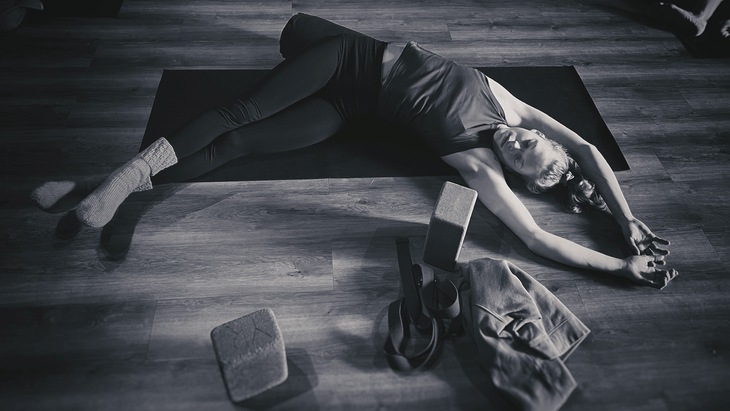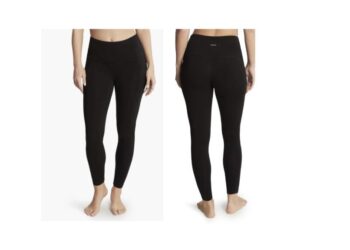“], “filter”: { “nextExceptions”: “img, blockquote, div”, “nextContainsExceptions”: “img, blockquote, a.btn, a.o-button”} }”>
Heading out the door? Learn this text on the brand new Exterior+ app obtainable now on iOS units for members!
>”,”title”:”in-content-cta”,”sort”:”hyperlink”}}”>Obtain the app.
For those who observe yin yoga, chances are high you’re aware of the proliferation of artistic, fanciful, and typically foolish names for the poses. Cat Pulling Its Tail. Marauding Bear. Twisted Roots. Dragon with Open Wings. Swish Bow. Upswan.
Many college students and academics, together with myself, discover this to be an endearing facet of the observe. However the array of yin yoga pose names will be dizzying. What one instructor calls a Resting Frog one other instructor introduces as Lazy Lizard. It will probably looks as if each time you attend class, you be taught a brand new title.
This may lead one to surprise, can anybody invent a yin yoga pose and provides it no matter title they need?
Just about.

In a way, once you’re practising yin, you’re co-creating the pose. The instructor will assist information you to search out the posture, however finally you’re the one individual experiencing your physique—the one one who really is aware of the place, and to what diploma, you’re experiencing the feeling. Is it tolerable? Is it one thing you may sit with for some time? Or is there a pointy ache in your knee fairly than the supposed goal of your hip?
Yin invitations you to have interaction with these questions. How does it really feel? What’s my physique telling me? Does adjusting the form higher permit me to melt and lean in? On this manner, yin will increase our capability to sense, really feel, and meet ourselves. The exterior form turns into a container for the act of inner quiet and profound listening.
Meaning there is no such thing as a single alignment that’s right. There are various attainable shapes, totally different orientations to gravity, and countless little tweaks to make sure there’s a model of every pose for each physique. As a result of our our bodies are totally different from each other, once you prioritize discovering your good stretch, you’ll seemingly end up in a distinct form than the individual on the neighboring mat.

Yin yoga is a comparatively newer observe, one which has gained in recognition during the last couple a long time thanks largely to yin academics Paul and Suzee Grilley, who made a aware determination to not use Sanskrit names. They wished to distinguish yin postures from the standard yoga asana, or poses, that you just expertise in a vinyasa class.
This determination was additionally made, partially, to emphasise that in yin yoga, the form of a pose is secondary to its operate. It’s not about how a pose seems, or what it’s known as, however the way it feels.
The yin yoga model of Pigeon Pose (Eka Pada Rajakapotasana), for instance, is practiced with the intention of concentrating on the hip joint and gluteal area. Practitioners do not need to sq. their hips and attempt to kind a 90-degree angle with their entrance leg for the posture to learn. So the Grilleys selected to name this form Sleeping Swan. Swan resembles Pigeon however is extra permissive. Swan doesn’t care in the event you sq. your hips or collapse off to the aspect. Swan’s high-quality in case your again leg is bent or your physique is rotated. Swan merely desires you to stretch your butt and calm down right into a meditative house.
This continued experimentation of practising in accordance with our personal sensations inevitably results in the creation of recent shapes—and new names. Many yin academics, like me, are all in regards to the foolish or the literal or something that can assist college students perceive the form and its underlying practical intention. The yin group’s regularly evolving lexicon of names is just proof of that. Resting Half Frog. Cobbler. Damaged Wing.
Practically 20 years into this observe, I’m nonetheless discovering this revelation via my very own physique and by studying from my college students. That is what occurs when there’s freedom to discover each attainable form.
So the following time you’re practising a yin yoga pose and, in an effort to find simply the appropriate sensation, you end up morphing from a Mermaid into one thing that strikes you as extra of a Aspect-Mendacity Sloth, know that you just’re doing it precisely proper.

“], “filter”: { “nextExceptions”: “img, blockquote, div”, “nextContainsExceptions”: “img, blockquote, a.btn, a.o-button”} }”>
Heading out the door? Learn this text on the brand new Exterior+ app obtainable now on iOS units for members!
>”,”title”:”in-content-cta”,”sort”:”hyperlink”}}”>Obtain the app.
For those who observe yin yoga, chances are high you’re aware of the proliferation of artistic, fanciful, and typically foolish names for the poses. Cat Pulling Its Tail. Marauding Bear. Twisted Roots. Dragon with Open Wings. Swish Bow. Upswan.
Many college students and academics, together with myself, discover this to be an endearing facet of the observe. However the array of yin yoga pose names will be dizzying. What one instructor calls a Resting Frog one other instructor introduces as Lazy Lizard. It will probably looks as if each time you attend class, you be taught a brand new title.
This may lead one to surprise, can anybody invent a yin yoga pose and provides it no matter title they need?
Just about.

In a way, once you’re practising yin, you’re co-creating the pose. The instructor will assist information you to search out the posture, however finally you’re the one individual experiencing your physique—the one one who really is aware of the place, and to what diploma, you’re experiencing the feeling. Is it tolerable? Is it one thing you may sit with for some time? Or is there a pointy ache in your knee fairly than the supposed goal of your hip?
Yin invitations you to have interaction with these questions. How does it really feel? What’s my physique telling me? Does adjusting the form higher permit me to melt and lean in? On this manner, yin will increase our capability to sense, really feel, and meet ourselves. The exterior form turns into a container for the act of inner quiet and profound listening.
Meaning there is no such thing as a single alignment that’s right. There are various attainable shapes, totally different orientations to gravity, and countless little tweaks to make sure there’s a model of every pose for each physique. As a result of our our bodies are totally different from each other, once you prioritize discovering your good stretch, you’ll seemingly end up in a distinct form than the individual on the neighboring mat.

Yin yoga is a comparatively newer observe, one which has gained in recognition during the last couple a long time thanks largely to yin academics Paul and Suzee Grilley, who made a aware determination to not use Sanskrit names. They wished to distinguish yin postures from the standard yoga asana, or poses, that you just expertise in a vinyasa class.
This determination was additionally made, partially, to emphasise that in yin yoga, the form of a pose is secondary to its operate. It’s not about how a pose seems, or what it’s known as, however the way it feels.
The yin yoga model of Pigeon Pose (Eka Pada Rajakapotasana), for instance, is practiced with the intention of concentrating on the hip joint and gluteal area. Practitioners do not need to sq. their hips and attempt to kind a 90-degree angle with their entrance leg for the posture to learn. So the Grilleys selected to name this form Sleeping Swan. Swan resembles Pigeon however is extra permissive. Swan doesn’t care in the event you sq. your hips or collapse off to the aspect. Swan’s high-quality in case your again leg is bent or your physique is rotated. Swan merely desires you to stretch your butt and calm down right into a meditative house.
This continued experimentation of practising in accordance with our personal sensations inevitably results in the creation of recent shapes—and new names. Many yin academics, like me, are all in regards to the foolish or the literal or something that can assist college students perceive the form and its underlying practical intention. The yin group’s regularly evolving lexicon of names is just proof of that. Resting Half Frog. Cobbler. Damaged Wing.
Practically 20 years into this observe, I’m nonetheless discovering this revelation via my very own physique and by studying from my college students. That is what occurs when there’s freedom to discover each attainable form.
So the following time you’re practising a yin yoga pose and, in an effort to find simply the appropriate sensation, you end up morphing from a Mermaid into one thing that strikes you as extra of a Aspect-Mendacity Sloth, know that you just’re doing it precisely proper.













